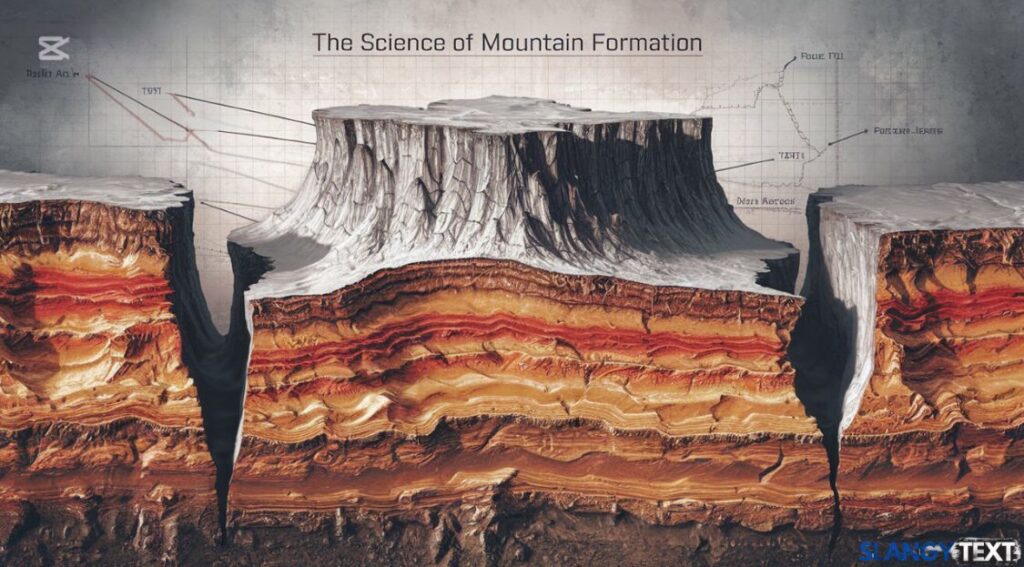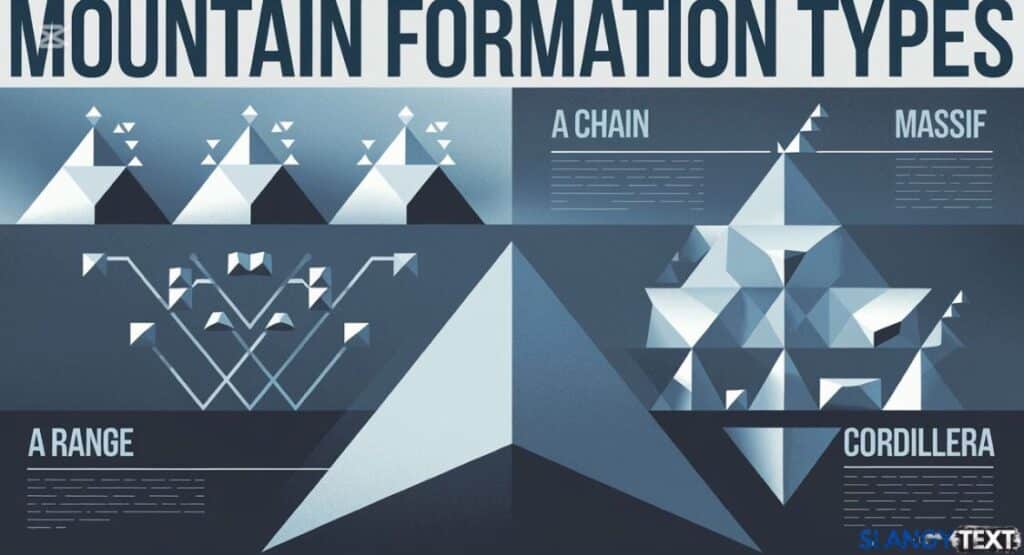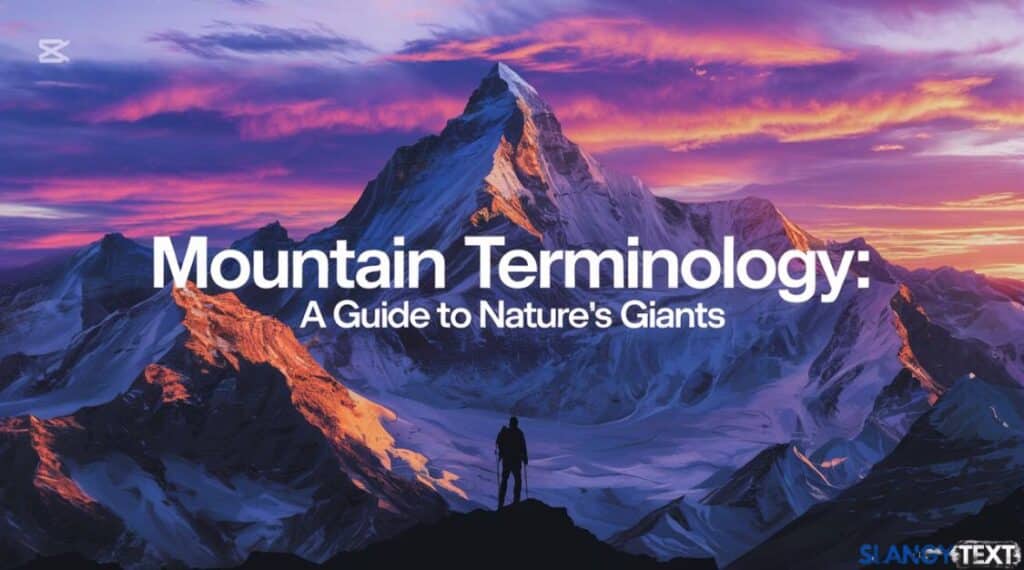Mountains have long captivated human imagination, standing as majestic sentinels of our planet’s remarkable landscape. When we encounter these magnificent natural formations, we often find ourselves searching for the perfect words to describe their collective presence. Professional writers, geographers, and language enthusiasts frequently encounter the challenge of precisely describing multiple mountains in a single, elegant term.
Scenario: Jake Thompson stands at the trail head, his hiking backpack loaded with gear, staring at a breathtaking landscape of interconnected peaks. His tour guide, Maria Rodriguez, turns to him and says, “Welcome to the mountain range that will challenge everything you know about geographical terminology.”
The Linguistic Journey: A Research Expedition Email
Scenario: A crisp morning email arrives in Dr. Emily Carter’s inbox from her geological research partner, revealing an unexpected discovery in a remote mountain region.
Imagine receiving an email from your colleague Sarah Thompson at the Geographic Research Institute. She writes, “Our expedition discovered an extraordinary massif in the remote Andean region, showcasing multiple interconnected peaks that challenge traditional mountain nomenclature.” This scenario highlights the complexity of describing mountain formations beyond simple numerical references.
- Must Visit : What Is The Collective Noun For Keys?
Exploring Collective Mountain Terminology: A Cartographer’s Challenge
Scenario: During a professional cartography conference, Alex Rodriguez presents a complex mapping project that tests the limits of mountain description terminology.
The English language offers several fascinating collective nouns for mountains, each carrying its own nuanced meaning. A mountain range represents a linear formation of peaks, while a mountain chain suggests a more connected geological structure. The term massif particularly emphasizes a compact group of mountains with significant geological integrity.
Geographical Contexts and Variations: A Global Expedition
Scenario: International geography students participate in a virtual conference, comparing mountain formations from different continents through multimedia presentations.
Different regions develop unique approaches to describing mountain groups. The Himalayas demonstrate a perfect example of a complex mountain system that defies simple categorization. Professional geographers might use terms like cordillera when describing extensive mountain networks spanning vast geographical areas.
Scientific Perspectives: A Research Funding Proposal
Scenario: Dr. Robert Williams prepares a comprehensive research proposal for a geological funding committee, carefully selecting precise terminology to describe mountain formations.
Tectonic activity plays a crucial role in understanding how mountains form and cluster. Geologists recognize that mountains are not isolated entities but part of complex earth’s crust interactions. These formations tell stories of geological processes spanning millions of years.
Discovering Mountain Terminology
Scenario: A group of adventure photographers gathers around a topographical map, debating the precise terminology to describe the stunning mountain landscape before them. Sarah Collins, the lead photographer, points to a complex formation and asks, “How exactly do we describe this magnificent collection of peaks?”
Mountains have long captivated human imagination, standing as majestic sentinels of our planet’s remarkable landscape. When we encounter these magnificent natural formations, we often find ourselves searching for the perfect words to describe their collective presence. Professional writers, geographers, and language enthusiasts frequently encounter the challenge of precisely describing multiple mountains in a single, elegant term.
- You Might Also Like : Understanding Boy’s, Boys’, And Boys: A Simple Guide
The Linguistic Journey of Mountain Descriptions
Scenario: During a crisp morning geology lecture, Professor Michael Roberts challenges his students to communicate the complexity of mountain formations using precise collective nouns. A young student, Emily Thompson, nervously raises her hand, attempting to articulate the nuanced differences between various mountain grouping terms.
Imagine receiving an email from your colleague Sarah Thompson at the Geographic Research Institute. She writes, “Our expedition discovered an extraordinary massif in the remote Andean region, showcasing multiple interconnected peaks that challenge traditional mountain nomenclature.” This scenario highlights the complexity of describing mountain formations beyond simple numerical references.
Exploring Collective Mountain Terminology
Scenario: At an international cartography conference, two researchers from different continents engage in a heated debate about the most accurate way to describe a complex mountain formation they’ve recently studied. Their animated discussion draws the attention of colleagues from around the world.
The English language offers several fascinating collective nouns for mountains, each carrying its own nuanced meaning. A mountain range represents a linear formation of peaks, while a mountain chain suggests a more connected geological structure. The term massif particularly emphasizes a compact group of mountains with significant geological integrity.
Geographical Contexts and Variations
Scenario: A National Geographic documentary crew prepares for an ambitious filming expedition, meticulously planning how to capture the essence of a diverse mountain landscape. The team’s lead researcher struggles to find the perfect terminology to describe the complex geological formation they’re about to document.
Different regions develop unique approaches to describing mountain groups. The Himalayas demonstrate a perfect example of a complex mountain system that defies simple categorization. Professional geographers might use terms like cordillera when describing extensive mountain networks spanning vast geographical areas.
Scientific Perspectives on Mountain Groupings

Scenario: In a high-stakes research grant presentation, Dr. Rachel Johnson stands before a panel of distinguished geologists, carefully selecting her words to describe a groundbreaking discovery about mountain formation. Her precise use of collective nouns becomes crucial in communicating the significance of her research.
Tectonic activity plays a crucial role in understanding how mountains form and cluster. Geologists recognize that mountains are not isolated entities but part of complex earth’s crust interactions. These formations tell stories of geological processes spanning millions of years.
- Also Like To Know This : FYP Meaning : What does it mean on Tik Tok?
Mountain Clusters and Their Significance
To illustrate the diversity of mountain descriptions, consider the following comparative table showcasing different mountain grouping terminologies:
| Collective Term | Geographical Example | Typical Characteristics |
|---|---|---|
| Mountain Range | Rocky Mountains | Linear formation across extensive terrain |
| Mountain Chain | Alps | Interconnected peaks with similar geological origin |
| Massif | Mont Blanc Massif | Compact group of peaks with shared geological structure |
| Cordillera | Andes | Extensive mountain system spanning multiple regions |
| Mountain Group | Sierra Nevada | Loosely connected peaks within a specific geographical area |
| Mountain Cluster | Cascade Range | Concentrated collection of peaks in close proximity |
| Mountain Complex | Himalayan Range | Intricate system of multiple mountain sub-ranges |
| Mountain Belt | Appalachian Mountains | Extensive linear mountain formation |
| Mountain System | Hawaiian Islands Volcanic Range | Interconnected mountains with shared geological history |
| Mountain Province | Basin and Range Province | Geological region characterized by multiple mountain formations |
Two Practical Examples of Mountain Collective Noun Usage
Example 1: Academic Research Communication
In a scholarly paper titled “Geological Dynamics of Alpine Formations,” Dr. Helen Martinez writes: “The mountain chain of the European Alps presents a complex geological narrative, demonstrating how tectonic interactions create breathtaking nature through millennia of continuous transformation.”
Example 2: Travel Writing Descriptive Narrative
Travel journalist Mark Anderson describes his experience in South America: “Traversing the cordillera of the Andes, I witnessed how a mountain cluster can transform from snow-capped peaks to lush valleys, each formation telling a unique story of geological persistence and natural beauty.”
Practical Applications in Professional Writing
Professional writers and researchers must carefully select terminology that accurately represents mountain formations. An email from Dr. Michael Roberts to his research team might read: “Our latest study explores the breathtaking nature of the mountain complex in the northwestern region, highlighting its unique ecosystem characteristics.”
Cultural and Linguistic Nuances
Different cultures interpret mountain groupings through unique linguistic lenses. Indigenous communities often develop rich descriptive terminologies that capture the spiritual and ecological significance of mountain landscapes.
Environmental and Ecosystem Perspectives

Mountains represent more than geological formations. They are complex ecosystems supporting diverse wildlife and serving critical environmental functions. A mountain range might contain multiple microclimates, each supporting unique flora and fauna.
Ecosystem Balance and Natural Resources
Consider a scenario where environmental researcher Emma Williams writes a report: “The mountain cluster in the Pacific Northwest provides potable water for three major metropolitan areas, demonstrating the critical role of these geological formations in sustaining human populations.”
Educational and Linguistic Exploration
Language comprehension involves understanding subtle nuances in geographical terminology. Students of geography and professional communicators must develop skills in accurately describing these magnificent natural structures.
Teaching Mountain Terminology
Instructors might design engaging scenarios that challenge students to describe mountain formations using precise collective nouns. These exercises enhance visualization and descriptive skills.
Conclusion: Embracing Mountain Diversity
Mountain formations represent a testament to our planet’s geological complexity. Whether we describe them as a range, chain, or massif, these natural wonders continue to inspire awe and scientific curiosity.
The next time you encounter multiple mountains, remember that language offers us a rich palette of descriptive terms to capture their breathtaking nature. From steep terrain to extensive ranges, mountains tell stories of geological time, ecological balance, and natural beauty.
- Must Explore : 20 Professional Ways To Say “It Was A Pleasure Meeting You”

Kayla Rogers is a writer at Slangy Text who loves exploring modern acronyms & slangs and how they shapes our conversations. She enjoys sharing fun and interesting articles that connect with readers. When she’s not writing, Kayla likes to keep up with the latest trends or relax with a good book.







